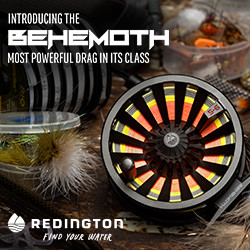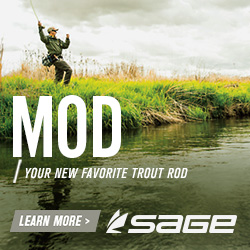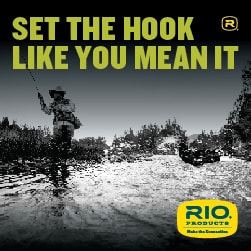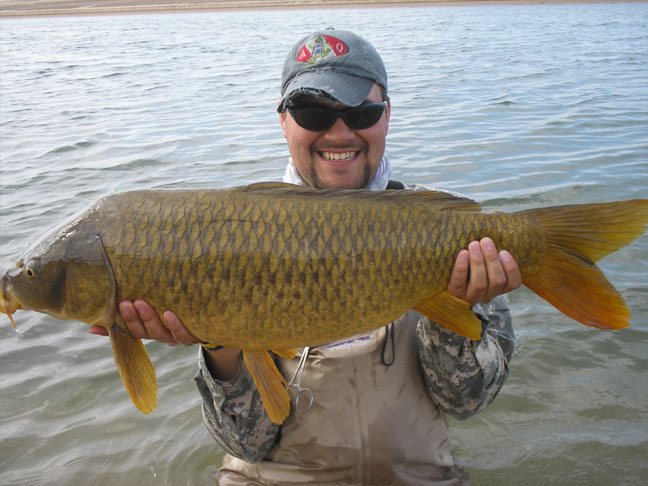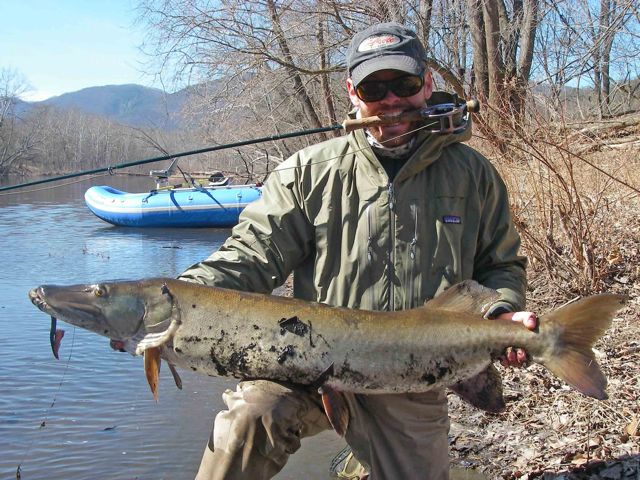Our new friend Dr. Sam Snyder was kind enough to share his thoughts and perspective regarding the Cheney invite to the American Museum of Fly Fishing. Sam is a Professor of Environmental Ethics, a John Daniels Fellow and passionate angler, we're honored to bring his voice to the dialog.

It took me a while to actually put these words down. I wasn’t quite sure about how to handle it all, particularly in the midst of my deep respect for the American Museum of Fly Fishing (AMFF) and all that it stands for - and, in part, because the AMFF supports academics and historians of environmental politics like me. But as one deeply engaged in the history of fly fishing’s environmental politics, the choice of Dick Cheney as the keynote speaker for the annual fund raising dinner deeply troubles me, like it does many others. Beyond my own personal struggle with this choice, however, I think the whole issue gets to larger questions we must all grapple with if we take our sport and its streams seriously.
So, here are a few thoughts:
As both a member of the AMFF and one who has spent many hours in their library, I was surprised that I first heard of this choice, not from the AMFF, but from our friends at Moldy Chum (by way of Ted Williams’ thoughts on the matter). I was outraged! My mind turned not to Cheney’s fly casting or hunting abilities (or lack thereof), but to his environmental record. Seriously, I thought, here is a man who repeatedly ignored varied global human rights accords – so the rights of nature were clearly out the window. Despite a sketchy track record of environment and species protection, those in his camp, such as James Connaughton (the former chair of the Whitehouse Council on Environmental Quality under Bush and Cheney), will tout 195,000 acres of marine protection as proof that the Bush/Cheney environmental legacy is defined by “unbouding results.” However, what the politicians fail to note is that those acres of marine protection were traded for an even larger acreage of old growth forest, roadless areas, pristine streams, and endangered species habitat (among many other sins) – all vital to the future of our odd little sport. So, yes, I was upset to see this bit of news regarding Cheney’s invitation. However, when I paused to reflect on it all, I was simultaneously not entirely surprised – which is, in part, what intrigues me. In some ways, I am curious about what the angry response says about us and our views of our sport, as much as it does the issue. Why does it bother us so much? Should we be surprised, really?
It bothers us, because the AMFF is supposed to be one of the hallowed locations of our sport’s history and some of us perceive Cheney as the antithesis to all that we hold dear in our fly casting hands: fish, clean waters, and protected habitat. Despite Ted Williams stating that the “entire fly fishing community is disgusted” with this choice, I suspect that those of us who hate all that Cheney stands for are, in reality, the minority in fly fishing and larger
sporting communities. The entire community is not disgusted, only a few of us. Which is why the AMFF’s choice is not all that surprising.
While numbers might have shifted in recent years, in reality most American “sportsmen,” have supported the likes of Cheney, even in our beloved circles of fly fishers. In part, I believe this is what is so disappointing about it all. We realize that many fly fishers and other sportsmen and sportswomen openly support those who do nothing good for the habitats in which we seek our varied and adored species. So, while in the media, on sites like Moldy Chum, or various blogs, Facebook, Twitter, etc., many of us (myself included) have “vocally” protested the selection of Cheney as keynote speaker, there were probably a great number who saw nothing at all wrong with, or even applauded, the choice. After all, he was a vice president who really does enjoy fly fishing (regardless of how good he might be at it). And the collection of presidential angling memorabilia at the AMFF is, for sure, impressive and unique. So in some ways, I don’t necessarily fault the AMFF.
And, my disappointment aside, I will continue to support the AMFF. They have been immensely helpful and gracious with me when I wanted to work in their library for my dissertation research and when they published my work in their journal. However, most importantly, deep down inside I believe in what they stand for in a grander sense. This history is imperative. The history is so significant that I think we should all support it, for reasons I will note below.
Thinking about numbers I wonder how many who are complaining actually support the AMFF financially. The total membership (which costs a mere $40 annually) of the AMFF is barely 2000. This is a paltry percentage of our larger fly fishing numbers. I know, I know. We can’t support every TU, FFF, or other non-profit cause that comes our way. However, if we don’t (or do) like their choices, perhaps we should get more involved. After all, they do watch guard over the material artifacts of our sacred history.
But back to the AMFF. What I have the most problem with, however, is their response to the issue. Beyond the way they handled it, I take issue with their response statement: “Although we work with conservation organizations, conservation is not our issue” (AMFF Director Catherine Comar). While I believe this message is one handed down from the board, and like the choice of Cheney, Comar had little say in the matter, I also believe that the statement is utterly fallacious.
It is fallacious because you cannot separate the very important historical artifacts housed in the AMFF from the issue of the environment and conservation. Their separation, in this case, seems a convenient move for the museum and the moment. In reality the claim is illogical. At the AMFF, in its galleries, on its book shelves, and in its storage rooms, we find the sacred artifacts of our sport (rods, reels, flies) and the stories (both published and written in personal journals) – all of which track the growth of technologies, shifts in rod building, and advances in fly tying. Throughout all of that, however, we also find details of the evolution of our varied ethics and relations to nature, streams, and the fish we pursue with religious passion.
So, to the AMFF, its leadership, and the executive board, I politely argue that you are wrong; the AMFF has everything to do with conservation. This is why I and so many others are drawn to your cause in the first place. Now, I am not asking you to be out rolling boulders, planting willows, and restoring native species. That is, for sure, the work of groups like TU, FFF, and the countless and invaluable grassroots organizations who are getting it done on our streams. However, I hope that you recognize the fallacy in your claim. Everything you do has to do with the preservation of our sport’s history. And, therefore, has everything to do with the conservation of the waters out of which the sport’s history hatched.
It is for those same reasons, however, that I will continue to support your work and the overall aim of the AMFF, all that it represents, and all that it means for understanding how we have grown as anglers and conservationists; where we have gone wrong, and how we can learn from those errors to continually improve our ways of relating to the waters and species that mean so much to us. I hope we all will. If your choice of Cheney angered so many, then we need to get involved and direct the future of the place that protects our holy artifacts.
Sure, I know that many reading this, many in my generation of anglers, are more intrigued by blogs, big fish, flashy pictures, and sexy films. Antiques and museums are not necessarily that cool. I get it. But we must never forget our history – Halford, Haig-Brown, Marinaro, Schwiebert, and so many more. These are the figures who have truly pushed our sport’s boundaries both in terms of techniques and our ethics of conservation. This is why places like the AMFF are so very important. Don’t get me wrong. I, too, love all the great new movies that attempt push our sport deeper and deeper. I support and admire sites like Moldy Chum - I start every morning with a dose of coffee and molded chum. I think that what B2 and EJR are up to is great. However, we must also note that amidst their big pictures, humor, and boundary pushing angling, they profess an important message – fly fishing done “Reel Pure!”
No matter how deep we push the sport, we have to remember and understand that we come from a long, varied, and inspirational history of both famous and anonymous anglers. The stories of that evolving “reel” purity are what places like the AMFF tell. And, by paying attention to that story, we can, as Teeg Stoufer (Recycled Fish) says, all “become better steward of our streams” . . . and our sport. Therefore, in working toward that stewardship, we must all, the AMFF included, remember that in our quests to push the depths of fly fishing, history and conservation are inseparably essential.
I have to thank Teeg Stouffer and Brian Bennett (a.k.a. B2) for encouraging me to finally finish putting these thoughts into words. Also, thanks to B2, EJR, and Moldy Chum for throwing these thoughts out to the fly fishing community. If anyone has any replies on my thoughts and rants, I would love to hear from you (snyderaway@gmail.com). I currently teach environmental ethics at Kalamazoo College in Michigan, I am moving to Alaska in the fall, and in spring 2010 I will be the John H. Daniels Fellow at the National Sporting Library, where I will continue to explore the deep story of our sport’s history and its evolving environmental consciousness.
 Wednesday, May 27, 2009 at 12:00AM
Wednesday, May 27, 2009 at 12:00AM 
 Fly Fishing,
Fly Fishing,  bass ackwards,
bass ackwards,  fly fishing for bass in
fly fishing for bass in  Contests,
Contests,  fly fishing
fly fishing 
